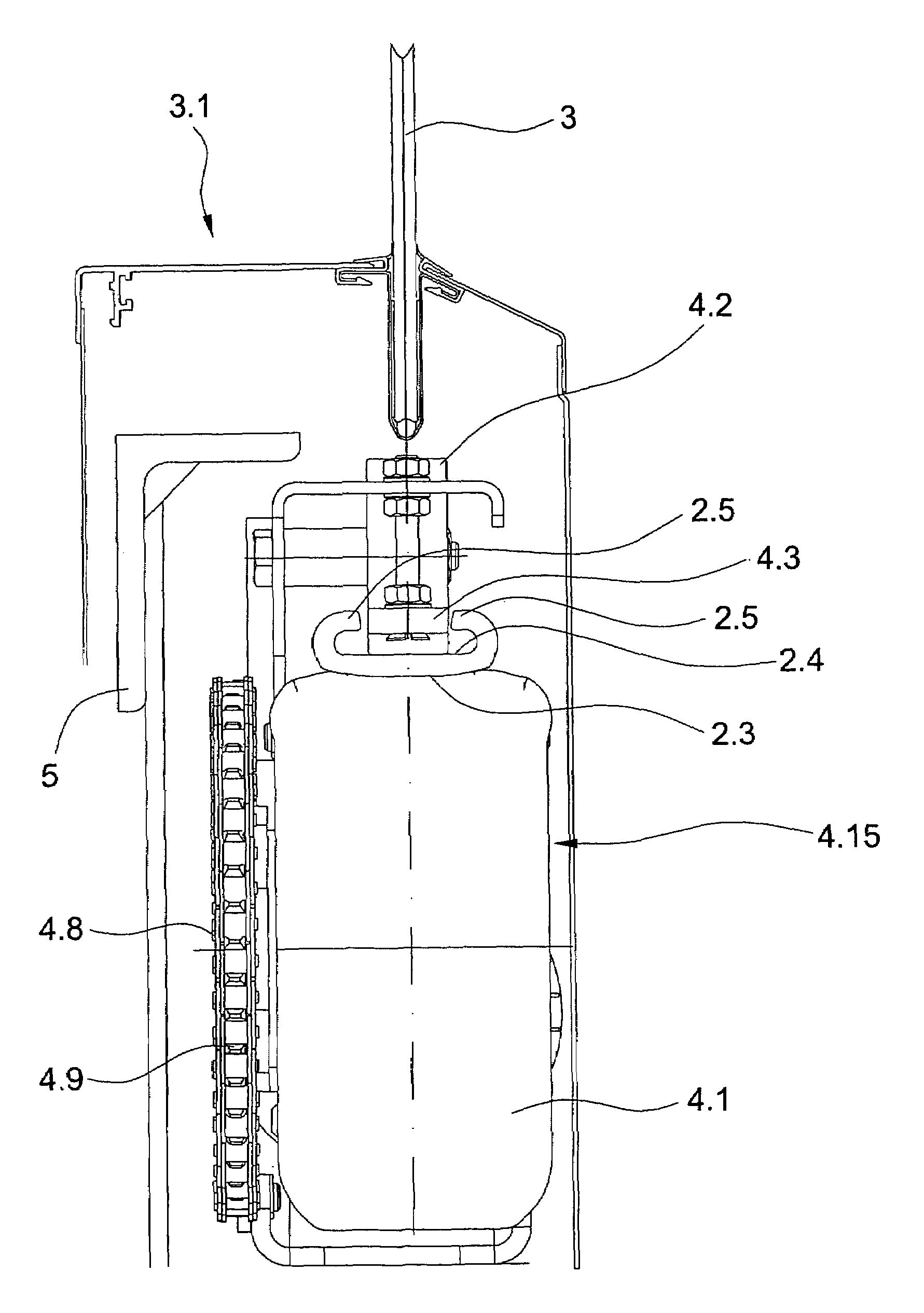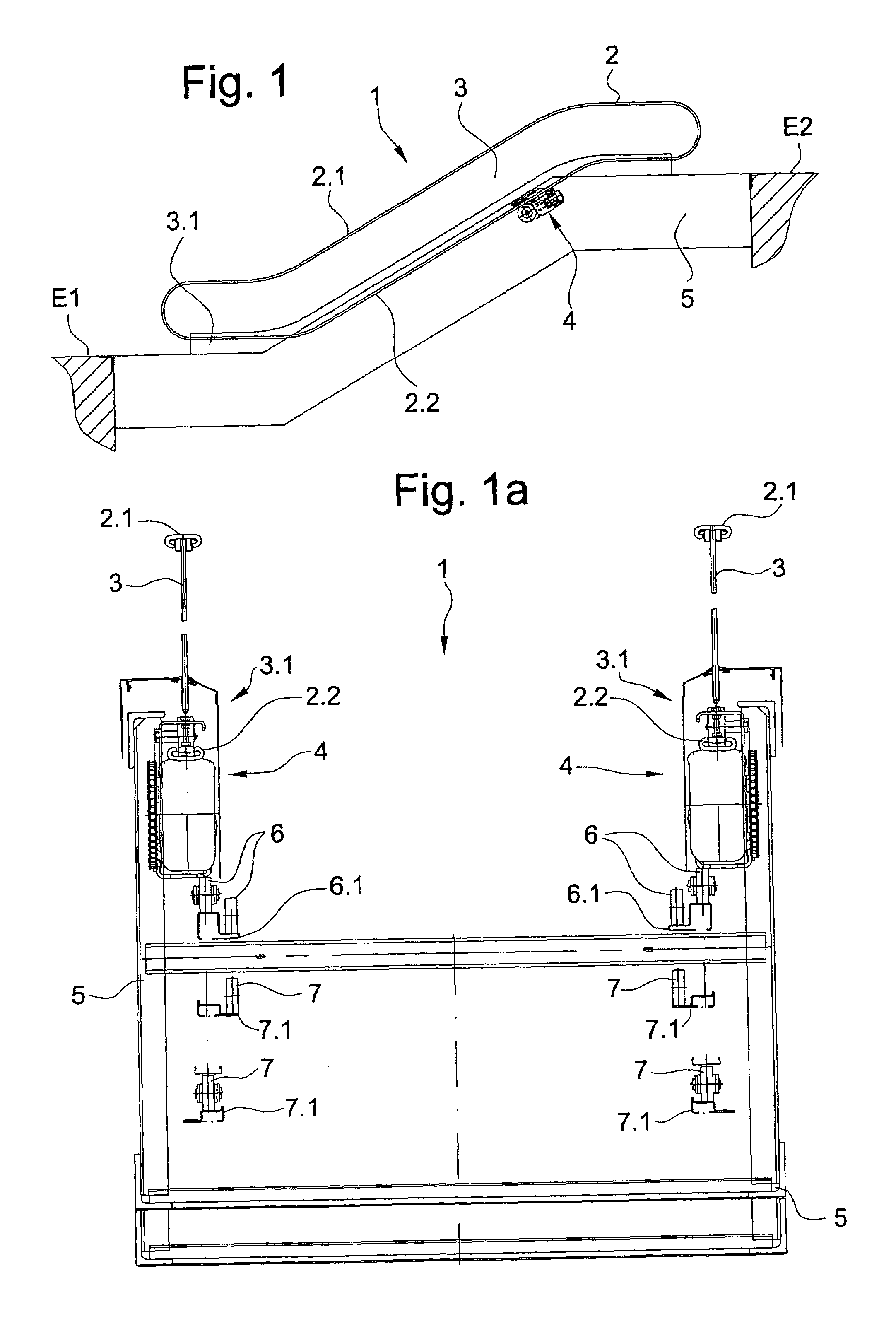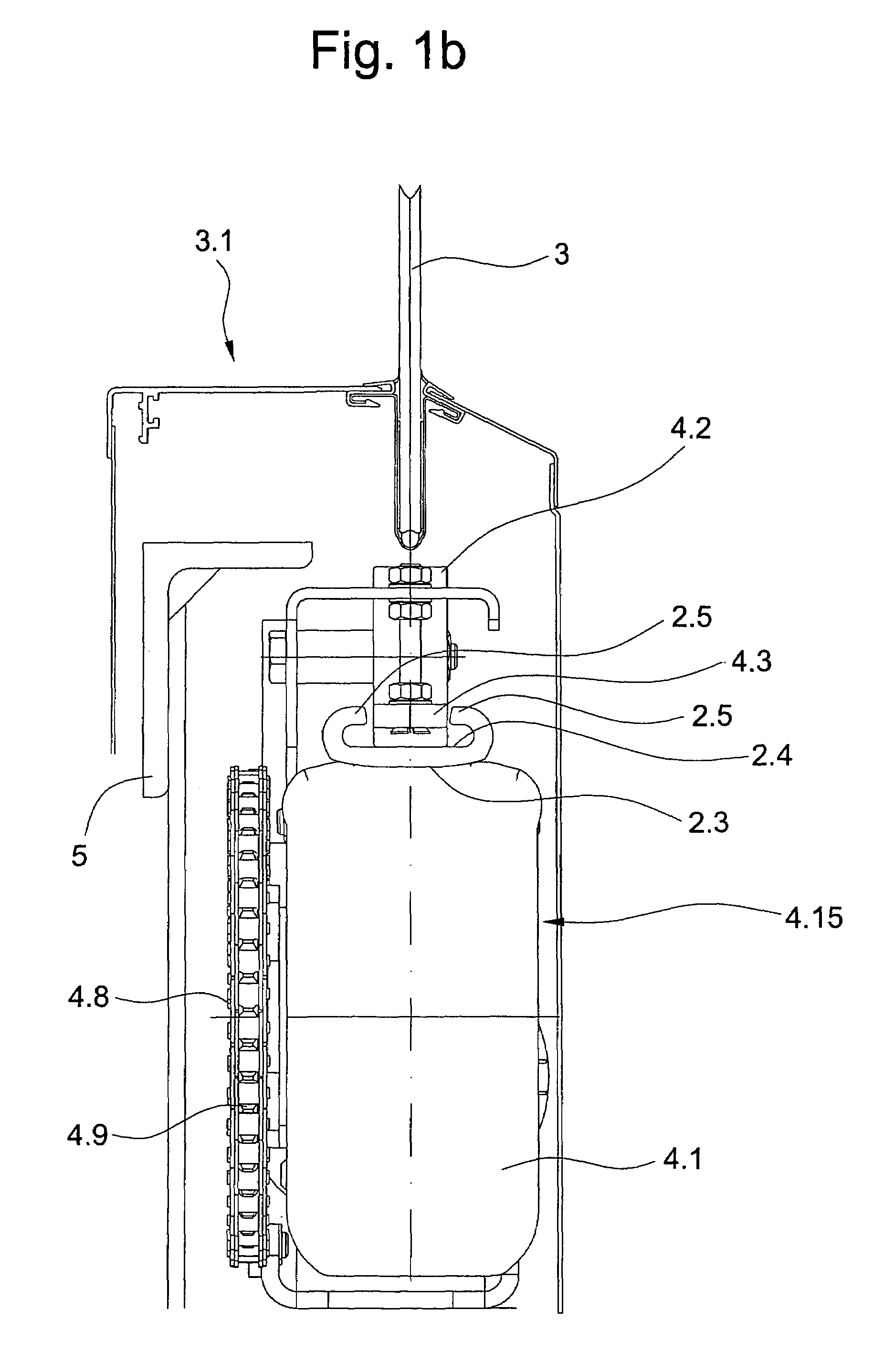Handrail-drive for an escalator or a moving walk
a technology for escalators and walking walks, applied in escalators, transportation and packaging, conveying, etc., can solve the problems of shortening the service life of the drive-wheels and the follow-wheels, exerting a high pressing force, etc., and achieves a greater contact area, reduced friction, and reduced force applied to the handrail
- Summary
- Abstract
- Description
- Claims
- Application Information
AI Technical Summary
Benefits of technology
Problems solved by technology
Method used
Image
Examples
Embodiment Construction
[0014]The handrail-drive according to the invention can also be used on moving walks with pallets. In the rest of the description as follows, only the term “escalator” will be used, but the statements made also apply analogously for a moving walk. As used herein, an “escalator” is construed to also encompass a moving walk, while the terms “step-band” and “steps” are to encompass a pallet band and pallets, respectively, in a moving walk construction.
[0015]FIG. 1 shows a side view of an escalator 1 which connects a first landing E1 with a second landing E2. The escalator 1 has a step-band comprising steps. A handrail 2 with a riding-side 2.1 and a return-side 2.2 is arranged on a balustrade 3, which is held at the lower end by means of a balustrade base 3.1. The balustrade base 3.1 is supported by a truss 5 of the escalator 1. A handrail-drive 4 arranged on the truss 5 drives the handrail 2. Arranged at both the upper and the lower end-area of the escalator 1 is a combplate, which ens...
PUM
 Login to View More
Login to View More Abstract
Description
Claims
Application Information
 Login to View More
Login to View More - R&D
- Intellectual Property
- Life Sciences
- Materials
- Tech Scout
- Unparalleled Data Quality
- Higher Quality Content
- 60% Fewer Hallucinations
Browse by: Latest US Patents, China's latest patents, Technical Efficacy Thesaurus, Application Domain, Technology Topic, Popular Technical Reports.
© 2025 PatSnap. All rights reserved.Legal|Privacy policy|Modern Slavery Act Transparency Statement|Sitemap|About US| Contact US: help@patsnap.com



